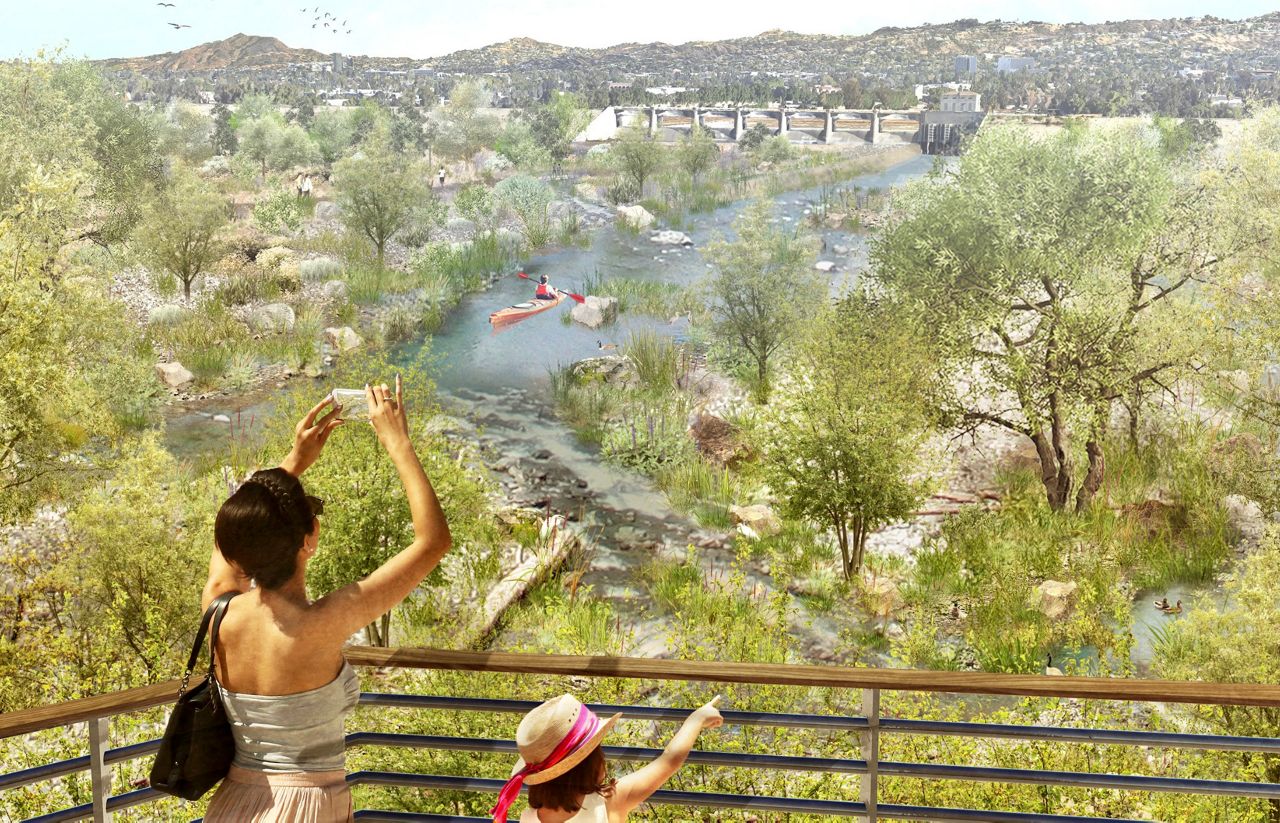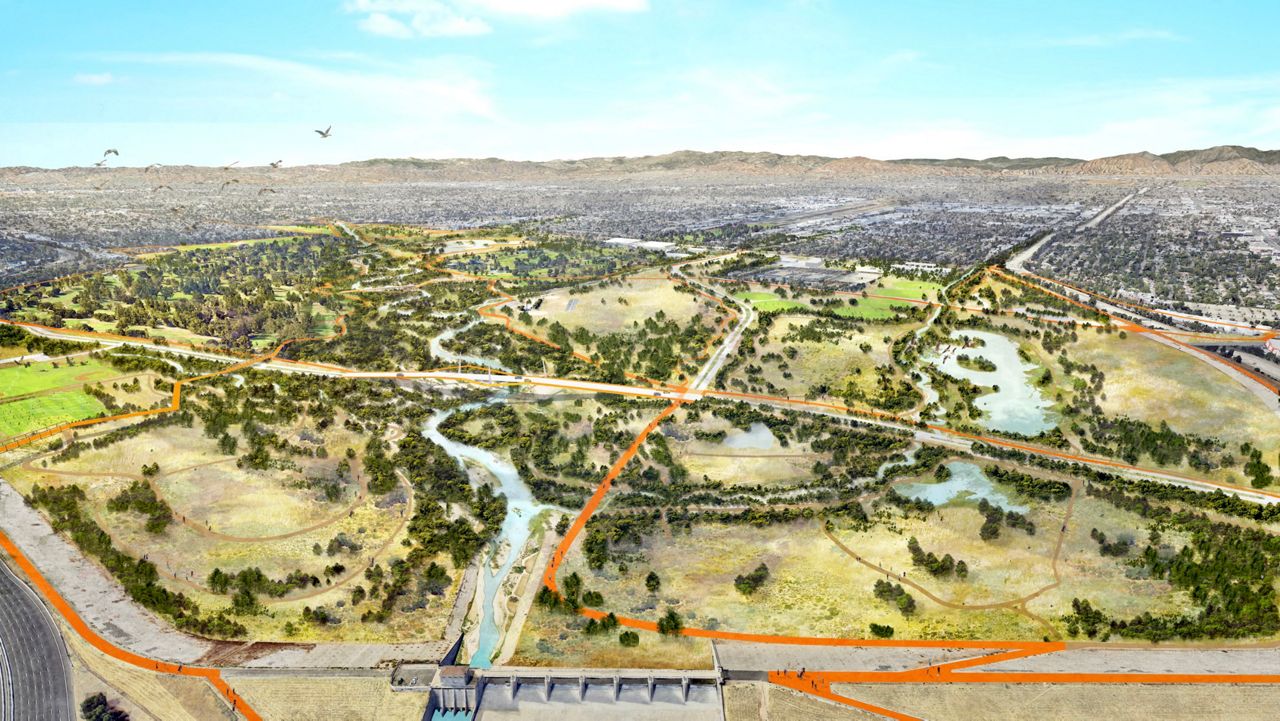LOS ANGELES — Los Angeles elected officials Monday unveiled the final vision plan for the revitalization of the Sepulveda Basin into a climate-resilient park.
"What began as an innovative idea from the Santa Monica Mountains Conservancy has evolved into a transformative project that will redefine our relationship with nature and community," Los Angeles City Councilwoman Imelda Padilla, who represents the 6th District, which includes the Sepulveda Basin, said at a news conference Monday morning.
The document is intended to serve as a comprehensive plan for enhancing the basin's recreational amenities with environmental preservation, and bolstering access to green spaces for LA residents of different socio- economic backgrounds. The plan also aims to improve the ecosystem within the basin, water quality of streams and outlets, transportation access to and within the basin, and bolster climate resilience, among other things.
The Sepulveda Basin Recreation Area is the largest open space in the San Fernando Valley, within the approximately 2,000-acre flood management basin owned by the U.S. Army Corps of Engineers.
Several elected and other officials joined Padilla to celebrate the milestone, including LA Deputy Mayor of Infrastructure Randall Winston and state Sen. Henry Stern, who presented a $2.5 million check as a "down payment" to help with implementing the vision plan.
"This is our basin, but it needs love. It's in desperate need of that revitalization here in the (San Fernando) Valley," Stern said.
He added, "We're leading up to the Olympics in 2028, and we know that this is going to be an important site for all that, but this can't just be sort of a one-and-done event space that we show up for."
The project has already received $3 million from the federal Consolidated Appropriations Act 2022. Stern emphasized the revitalization of the basin will need capital infrastructure dollars to make it happen.
In the next few days, the state Senate and Assembly, and governor, will be negotiating a climate bond, and if approved, it would go before voters in November, according to Stern, who co-authored it.

"There's over a million dollars tagged for projects just like this -- that reduce urban heat island effect, that manage floods, invests in wildlife, and builds the kind of nature-based and recycled water infrastructure that we think can really make us survivable for the next century," Stern said.
Stern also said the state is working to create a joint committee for the 2028 Olympics, in part to ensure the city of LA can make infrastructure and amenities improvements in the San Fernando Valley.
Winston said the Sepulveda Basin plan identifies nearly 50 capital projects valued at almost $5 billion to revitalize the open space. That's on top of similar plans to transform the LA River, including the 11-mile, 700-acre LA River Ecosystem Restoration Project and 13-mile LA Riverway Bike Path Project, totaling nearly $10 billion.
"These investments will have a significant and lasting impact that will address long standing issues in Los Angeles," Winston said. "It's going to take some time to complete all of these project, but through thoughtful planning, we can break down implementation into strategic phases, prioritizing overdue maintenance, as well as mobility and active transportation improvements for the 2028 Olympics."
Deborah Weintraub, chief deputy city engineer, noted the plan will take about 20-25 years to fully complete, but initial phases could begin just in time for the Olympics. Some early work that could be done sooner are pedestrian and bicycle pathway improvements, restoring wildlife areas and possibly establishing a demonstration garden or a community center with the aid of Native American representatives, she added.
Lorenzo Sandoval, owner of Guppies Fishing Adventures, a fishing guide service program for kids and adults, said the basin is a special place for a lot of Valley residents.
"This for me, as a kid, was one of the coolest craziest places ever because I live 10 minutes away, and it was one of my first interactions with wildlife," Sandoval said. "Coming from a poor family, I wasn't able to go on these long trips to Yosemite or Mammoth, but I was able to go to Lake Balboa, right down the street. It's where I fell in love with the outdoors right in the middle of the city."
The city of LA began leasing land in the basin from the federal government in the 1950s for recreation. Monday, the city leases more than 1,500 acres of land for public recreation, habitat reserves and critical infrastructure.



